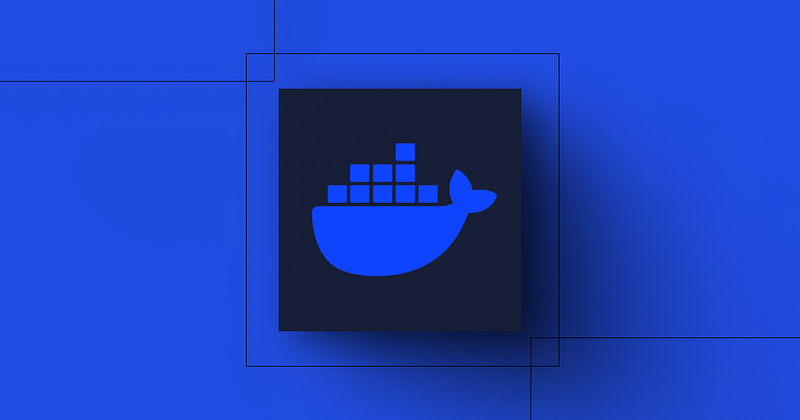Forget Docker — 2025 Is the Year of Better Alternatives
From faster container runtimes to seamless cloud-native workflows, the developer ecosystem has outgrown its dependency on Docker. Here’s…

Not too long ago, Docker was the undisputed champion of containerization. If you wanted to ship code consistently across environments, “Just Dockerize it” was the mantra. It revolutionized DevOps, made microservices possible at scale, and gave us the beloved docker run command.
But here we are in 2025 — and the truth is hard to ignore:
Docker’s role is shrinking, and in many cases, you don’t actually need it anymore.
The ecosystem has evolved. The tools have matured. And the workflows that once depended on Docker can now run better, faster, and cheaper without it.
Let’s unpack why.
1. The Rise of Dockerless Kubernetes
For years, Kubernetes and Docker were inseparable in developers’ minds. Kubernetes was the orchestrator, Docker the runtime. But in late 2020, Kubernetes officially deprecated Docker as a container runtime in favor of containerd and CRI-O.
By 2025, this shift is complete. Major managed Kubernetes services — like GKE, EKS, and AKS — run without Docker entirely.
Why?
Docker is a wrapper: Kubernetes doesn’t actually need Docker; it needs a container runtime that implements the Container Runtime Interface (CRI). Docker uses containerd under the hood anyway.
Less overhead: Cutting out Docker means fewer layers between your Kubernetes nodes and the actual container runtime, resulting in faster startup times and lower memory usage.
Simplified debugging: With native runtimes, developers interact directly with containerd or CRI-O tooling, streamlining operational workflows.
If you’re running workloads in Kubernetes in 2025, odds are you’re already Dockerless — even if you don’t realize it.
2. Dev Environments Are Moving Beyond Docker Desktop
Docker Desktop used to be the go-to choice for local container development. But the game has changed:
Podman: A daemonless, rootless, and Docker-compatible alternative with better security defaults.
Rancher Desktop: A lightweight desktop Kubernetes environment that supports containerd and nerdctl instead of Docker.
Colima: A blazing-fast Docker replacement for macOS and Linux using Lima and containerd.
These tools aren’t just cheaper or faster — they’re often easier to integrate with modern workflows. Developers tired of Docker Desktop’s licensing changes, resource usage, and sluggish performance are switching in droves.
3. OCI Standards Have Made Docker Optional
Back in Docker’s early days, it introduced its own image format and tooling. But today, the Open Container Initiative (OCI) has standardized image formats and runtimes.
This means:
Any OCI-compliant image can be built and run with tools other than Docker.
You can build an image withbuildahorkanikoand run it with containerd — no Docker in sight.
CI/CD pipelines (GitHub Actions, GitLab CI, Tekton) can produce and deploy containers without ever touching the Docker CLI.
Docker no longer owns the format — it’s just one of many tools that implement it.
4. Serverless and PaaS Are Eating Docker’s Lunch
In 2015, Docker was the bridge between code and production. In 2025, that bridge is often invisible thanks to serverless computing and modern PaaS platforms.
Services like:
AWS Lambda (with container image support)
Google Cloud Run
Fly.io
Heroku’s modern container buildpacks
… allow you to deploy straight from your source code or an OCI image, skipping Docker as a required local dependency.
For many teams, deploying containers is a platform feature, not a DevOps responsibility.
5. Performance-First Runtimes Are Winning
Developers and SREs care about startup times, resource usage, and security. That’s where newer runtimes shine:
containerd: The same runtime Docker uses internally, now directly integrated into Kubernetes and other platforms.
CRI-O: Designed specifically for Kubernetes, with a smaller footprint.
Finch: Amazon’s lightweight container development tool for macOS and Linux.
Podman: With rootless mode for better security in production.
These runtimes strip away Docker’s extra layer, offering better performance and smaller attack surfaces.
6. CI/CD Pipelines Don’t Need Docker Anymore
Your CI/CD builds probably aren’t running Docker the way you think they are.
Modern pipelines often rely on:
Kaniko: Build container images in Kubernetes without Docker-in-Docker.
BuildKit: Docker’s own high-performance builder — now usable without the Docker daemon.
Earthly: A build automation tool with portable, reproducible containers.
This means your production pipeline can build and push images without Docker installed — reducing complexity and avoiding “Docker in Docker” security headaches.
7. When Docker Still Makes Sense
Let’s be clear: Docker isn’t dead. There are still valid reasons to use it:
Rapid prototyping for local apps.
Running single-node, non-Kubernetes workloads.
Legacy systems that rely on Docker-specific tooling.
Developers who value Docker’s polished UX and extensive ecosystem.
But in most professional environments — especially at scale — Docker is no longer essential.
8. What to Do Instead in 2025
If you’re considering going Dockerless, here’s a practical transition path:
- Audit your workflows: Identify where Docker is being used — local dev, CI/CD, production — and ask if it’s necessary.
- Adopt OCI-compliant tools: Try
podman,colima, orbuildahlocally. - Leverage native runtimes: Use containerd or CRI-O directly with Kubernetes.
- Revisit your deployment strategy: Consider serverless or PaaS platforms that abstract away containers.
- Train your team: Familiarize developers with alternative tooling and standards.
Conclusion: The Post-Docker Era
Docker will always be remembered as the spark that ignited the container revolution. But revolutions move on. In 2025, we have faster runtimes, leaner workflows, and standardized formats that make Docker optional.
It’s not about hating Docker — it’s about using the right tool for today’s challenges. And for many teams, that tool is no longer Docker.
The question isn’t “Should we use Docker?” anymore. It’s:
“Why would we?”
If you found this perspective useful, consider sharing it with your DevOps team — it might just change how you ship software this year.




